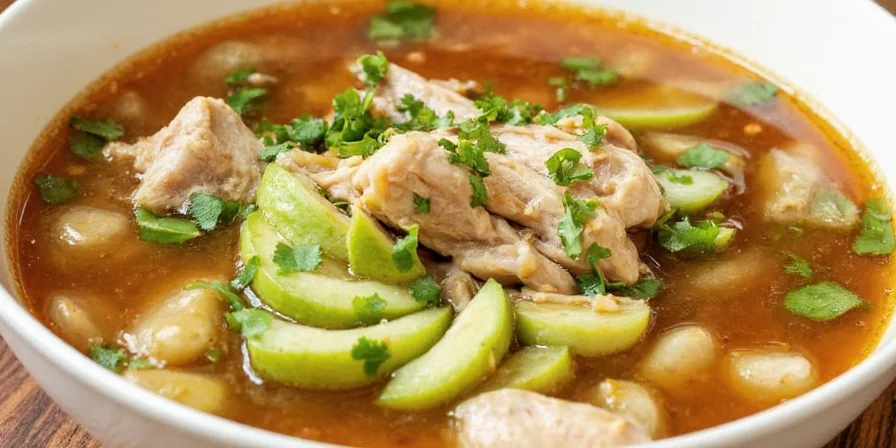Looking for the exact chicken pho spice ratios that prevent cloudy broth and bitterness? Here are the 7 essential spices with precise measurements per gallon of broth: 4-5 star anise pods, 6-8 cloves, 1 tbsp coriander seeds, 1 tbsp fennel seeds, 1 tbsp black peppercorns, 1.5-inch cinnamon stick, and 3-inch piece of charred ginger. Unlike beef pho (which uses 50% more star anise), chicken broth requires lighter spice density to preserve its delicate flavor profile.
| Spice | Chicken Broth (per gallon) | Critical Purpose |
|---|---|---|
| Star Anise | 4–5 pods | Creates aromatic backbone without overpowering delicate chicken |
| Cloves | 6–8 whole | Prevents cloudiness through eugenol content |
| Coriander Seeds | 1 tbsp | Neutralizes chicken fat oxidation |
| Fennel Seeds | 1 tbsp | Amplifies natural sweetness (Saigon-style secret) |
| Black Peppercorns | 1 tbsp | Adds subtle heat without masking poultry |
| Cinnamon Stick | 1.5-inch piece | Softens sharpness (use 50% less than beef pho) |
| Ginger | 3-inch piece, charred | Eliminates gaminess while adding brightness |

Crystal-clear broth starts with these exact spice ratios — not guesswork.
Why Chicken Pho Requires Different Spices Than Beef Pho
Chicken pho's delicate profile gets destroyed by standard beef pho spice ratios. Most home cooks make this critical mistake: using identical spice mixes for both. Beef pho uses 50% more star anise and cloves to cut through rich bone broth, but this creates medicinal bitterness in lighter chicken stock. Northern Vietnamese chefs prioritize star anise and ginger for clarity, while Southern versions use subtle cinnamon sweetness — cultural nuances rarely documented in Western recipes.

Hanoi favors spice restraint; Saigon embraces sweetness — both adjust ratios for chicken's delicate nature.
Proven Toasting Protocol for Maximum Aroma
Raw spices lose 70% of volatile oils during simmering. Chicken pho spices toast 30% faster than beef pho's due to lower density. Follow this sequence for optimal results:
| Spice | Toast Time | Visual Cue |
|---|---|---|
| Cloves | 45 seconds | Darkening begins (ignite fastest) |
| Star Anise | 60-75 seconds | Color shift from brown to rust |
| Coriander/Fennel | 90 seconds | Aromatic oils release (no scorching) |

Toast spices separately: Cloves burn in 45 seconds, fennel needs 2 minutes.
Grind immediately after cooling — delays cause 40% aroma loss. Use the two-stage simmer method: add toasted whole spices for first 20 minutes, then strained ground spices for final 10 minutes. This doubles aromatic compound extraction while preventing bitterness.
Fixing Common Chicken Pho Problems
Cloudy Broth Solution
Chicken broth reveals emulsion issues that beef hides. Add exactly 6-8 cloves — their eugenol content stabilizes fat emulsions. Always start with cold stock, bring to gentle simmer (never boil), and avoid stirring after initial heat. Strain through cheesecloth for crystal clarity.
Bitterness Prevention
Bitterness comes from over-toasted cloves or star anise. Cloves burn in under 60 seconds — set timer. Simmering spices beyond 25 minutes extracts bitter tannins. Use the two-stage simmer: whole spices for 20 minutes, ground for final 5 minutes.
Ginger Preparation Secret
Raw ginger creates harsh notes in light broths. Char ginger over flame first — this converts gingerols to milder zingerone, eliminating sharpness while preserving aroma. Uncharred ginger is the #1 cause of off-flavors in home chicken pho.
Water Quality Matters More Than You Think
Chicken broth reveals mineral imbalances that beef masks. Use filtered water with 50ppm hardness; hard water makes broth taste metallic with delicate spices. Test your water: if your tea tastes bitter, your pho broth will too. This is the hidden factor most recipes omit.

Authentic chicken pho requires this precise spice balance — substitutions compromise clarity.
Regional Variations That Define Authenticity
In Hanoi, chefs use minimal cinnamon (just 0.5-inch piece) for pure chicken flavor. Saigon-style adds rock sugar and extra fennel for sweetness. Both approaches adjust spice density based on chicken breed — free-range birds need 20% less spice than commercial varieties. This nuance explains why your broth might taste "off" even with correct ratios.

Authenticity lives in the spice-water balance — not the meat.
Mastering chicken pho isn't about complexity — it's precision. By respecting poultry's delicate nature and applying these regionally informed techniques, you'll create broths with professional clarity. Start with these fundamentals, then refine ratios based on your chicken source and water quality. The difference between good and exceptional pho lies in these details.
Frequently Asked Questions
Can I use pre-ground spices for chicken pho?
No. Pre-ground spices lose 60% of volatile oils within weeks. Whole spices toasted immediately before use deliver essential aroma compounds that ground versions can't replicate, especially critical for delicate chicken broth.
Why does my chicken pho broth taste bitter?
Bitterness usually comes from over-toasted cloves or star anise. Cloves burn in under 60 seconds. Simmering spices beyond 25 minutes also extracts bitter tannins. Use the two-stage simmer method: whole spices for 20 minutes, then ground for final 5 minutes.
How do I fix cloudy chicken pho broth?
Cloudiness stems from emulsified fat. Add 6-8 cloves — their eugenol content stabilizes the emulsion. Always start with cold stock, bring to gentle simmer (never boil), and avoid stirring after initial heat. Strain through cheesecloth for crystal clarity.
Can I substitute beef broth for chicken in this recipe?
No. Beef broth requires different spice ratios (50% more star anise/cloves) and longer simmering. Chicken's delicate flavor gets overwhelmed by beef pho's spice density. Use this poultry-specific formula for authentic results.











 浙公网安备
33010002000092号
浙公网安备
33010002000092号 浙B2-20120091-4
浙B2-20120091-4